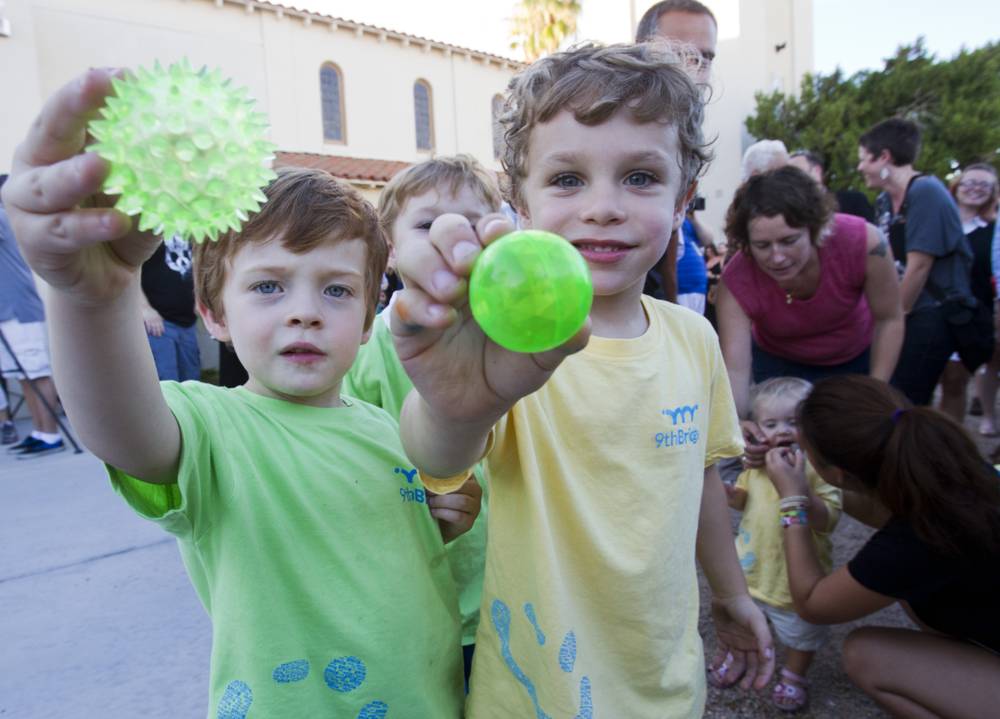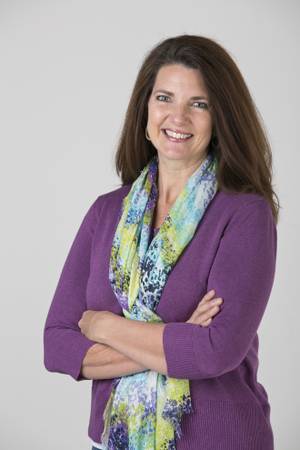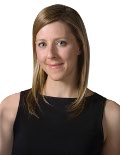We have refrigerator magnets that speed dial for pizza with a single push, putting greens that double as toilet mats and dusting slippers that strap to cats. From curing pandemics to putting the Internet inside a pair of eyeglasses, humans see a need and invent the way forward. So why hasn’t that unbridled creativity revolutionized American education?
In December, the Program for International Student Assessment will release its new rankings of academic performance. Odds that the U.S. has improved its global standings since 2009—14th in reading, 17th in science and 25th in math—are almost as poor as the outcomes of public schools in Las Vegas. Stats are gradually improving in the Clark County School District, but it still has the third worst high school graduation rate in the nation. Student-to-teacher ratios are high, and per-pupil funding is low. Local families are hungry for alternatives.
Early in 2012, Nevada launched a State Public Charter School Authority to drive creation of new schools and hold them to a higher standard. Gov. Brian Sandoval and then-Superintendent of Public Instruction James Guthrie signed off on its call to action in an open letter, beseeching community members to get directly involved in expanding the education system: “A review of the data on student outcomes reveals the undeniable need for new schools to offer innovative and effective models to tackle Nevada’s most persistent challenges in K-12 education …”
Hoping to meet that need, two groups spent the past year building a public high school online and a private early childhood education center Downtown. Curriculum to classroom experience, both went way outside the box. But vision is the easy part. That’s why most people stop at wishing and hand-wringing instead of actually making change.
Independent but publicly funded, charter schools could be the next wave of Nevada education. There are 31, with more in the pipeline thanks to the support of the charter authority, which authorizes new charters and offers guidelines, technical assistance and other resources. While they must meet state requirements in order to receive state sponsorship and money, charter schools are freer to color outside the lines of the public establishment. But more choices don’t count for much if the quality isn’t there. A study published in June by Stanford’s Center for Research on Education Outcomes compared charter schools across 25 states, finding that Nevada’s had the lowest standardized test scores among the 5,000 surveyed and lagged behind public schools by more than half a year when it came to learning milestones.
That might explain the thriving homeschool network in Las Vegas, which Angie Kleven and Valerie Blake helped shape. In addition to overseeing the schooling of their own children (Kleven has three and Blake has five), they co-taught American history to others and took leadership roles in homeschool groups and clubs. The public system wasn’t meeting their needs and, even without formal teacher training, they felt a DIY approach was worth the risk. With few public options, it also felt like the only way.
When Valerie Blake was in school she says she just went through the motions. As chair of the governing board of a developing charter school called Leadership Academy of Nevada, she hopes local students will have the opportunity for something significantly more inspiring and effective than the status quo.
Then they discovered Williamsburg Academy. Founded in 2008 as a private high school in Utah, it’s now entirely online. The Williamsburg model emphasizes the Socratic method, classical literature, leadership and liberal arts. The student body spans 35 states (plus pockets in Canada and abroad), with standardized test scores above national averages in math and science and way above in English, reading and writing. Blake’s son Andrew and Kleven’s daughter Maura enrolled in 2009, and their moms were thrilled with the academic rigor, personalized mentoring and strong social values. Blake wanted more families to have that experience without the $3,500 tuition, so in 2011 she reached out to Williamsburg co-founder James Ure and local charter schools that might partner to offer the curriculum. Ure was delighted, but the schools didn’t want to alter their agendas.
Six months later the charter authority debuted, and Blake and Ure attended its first session together. Inspired by the state’s resolve, Blake organized a committee to form a new school with parents, professionals and teachers. They modeled it after Williamsburg, which would be its Educational Management Organization, providing curriculum and 30 percent of the teachers. “There’s such an environment of respect that everybody is free to share. They don’t all come out thinking the same,” Blake said of the Williamsburg platform. “I would love to go back to school this way.”
From April to November 2012, the committee worked on the charter for the Leadership Academy of Nevada, laying out every detail of the school from mission to bylaws, budget to academic calendar. Kleven, who is office manager for the school, said they did it “on a shoestring,” hiring a consultant to review just the special education component. It cost $2,000 to compile and mail. Leasing an office, hiring teachers, paying for insurance and other necessaries added up to another $90,000. Williamsburg fronted some of the money, and the rest came from personal loans taken out by committee members.
More on education
- How to grow a school
- Now celebrated, the 20-year-old Las Vegas Academy was once seen as a threat
- They walked these halls: 5 famous Las Vegas Academy grads
- Cursive: Does anybody still care?
- School with a zoo? That’s only the beginning at local magnet schools and tech academies
- To create a real campus, UNLV needs students to live where they learn
“The banks that typically lend to charter schools don’t lend to startup schools. They want to see that you’re operating ... because if they lend to us and we don’t open, then what happens?” Kleven said.
At the time there were no state seed funds available (Kleven said an account has since been funded with $750,000 for startup schools), so they had almost no budget for promotion. Another roadblock was an old administrative code that prohibits new charter schools from enrolling until 120 days before opening, a constraint Kleven said negated peak sign-up times. So Leadership Academy relied on opportunities to meet with families, as they did at an open house in early August—just before they had to submit their enrollment number to the state. Their charter application estimated 180. They had 50.
Over doughnuts in a portable classroom, Ure made a case for the new school by showing videos of Williamsburg’s virtual classroom. Online education has a reputation for being sterile and passive, but students debating, presenting and taking tests in a Skype-like format appeared enthusiastic and fully engaged, whether the topic was the landmark Hazelwood case on freedom of speech or Bastiat’s take on legal plunder. “One of the biggest crises in education in America is that youth are underwhelmed,” Ure said. “They don’t know what they’re capable of.”
The clincher was Taylor Lurie, an incredibly articulate 17-year-old who left a local magnet school after her freshman year. She said she had tons of friends and top grades, yet she “lost all joy in school.” So she dropped out, a decision she said almost gave her father a heart attack. “It was honestly terrifying,” Lurie said, adding that it took one class with Williamsburg to convince her that she made the right choice. She touted the practice of reading opposing masterworks and drawing her own conclusions, collaborative seminars packing double the learning into half the time and a vibe that lets teens be their quirky selves. “The thing that’s really unique about this school is, everyone who’s in it wants to be there,” she said, sharing her excitement for the Leadership Academy to build on that concept.
Listening to Lurie and her daughter Maura talk up the school, Kleven couldn’t believe it wasn’t dealing with a waiting list. As a homeschooler, she understands how unnerving it is to experiment with education. The stakes are incredibly high. “Parents want a different result for their children, but they’re not willing to make that educational change. And part of that is that educational options are so new here,” she said. “They want to know what it’s going to look like on the other end before they take that leap.”
On August 23, the charter authority deferred Leadership Academy’s application, granting another year of startup status in which to set and reach a more reasonable enrollment goal. That’s the nature of startups. Kleven said the focus is on fundraising and refining. In a letter to families, Blake wrote: “The day will come when we will look back on this experience and recognize it as an essential step in the development of this extraordinary charter school.”
Delivering happiness, sure. But education? Of Tony Hsieh’s many multimillion-dollar promises through the Downtown Project, that one seemed like the biggest stretch. What does a tech mogul know about building a school?
Hsieh is a conduit. What he knows is how to attract dynamic experts to ambitious projects, though he doesn’t believe institutional knowledge is the only asset. Maybe that’s why he put his cousin Connie Yeh in charge of DTP’s education arm and mission to build not just a cutting-edge school, but one that would shift paradigms.
“A lot of innovation comes from those who aren’t in the industry thinking about it in a different perspective,” Yeh said of the wide-open mentality of 9th Bridge, DTP’s early childhood education center for infants up to kindergartners in a historic former church on Ninth and Bridger. “We thought about how cool it would be to teach kids early on to embrace that it’s okay to fail and learn from your mistakes, the idea of resilience and collaboration, learning by doing.”
A graduate of the Wharton School, Yeh was a derivatives trader on Wall Street when Hsieh asked what she really wanted to do. She said: “Teach.” Ironically, she’s spent the past year learning about everything from brain plasticity to the optimal shape of a trike track because, according to her, every detail of 9th Bridge is intentional. That’s especially clear in the physical environment and its recurring themes of natural light, vibrant color and connectivity between classrooms and to the outdoor spaces and surrounding neighborhood. Technology is woven into the background, from the fingerprint-verification system to mic-equipped observation nooks. Yeh doesn’t have children, but she calls the campus her baby. The site appraised for close to $2 million, and while the school didn’t disclose how many more millions have been sunk into its creation, the remodel alone suggests that the investment is significant. That’s the beauty of being a for-profit institution backed by Tony Hsieh.
Sexy building aside, DTP’s goal was to redefine school. So Yeh took stock of the best of what’s out there and then brought Meg Murray and Etola Berry onto her research team to brainstorm what could be. Murray has a doctorate in education and experience opening schools and as an entrepreneur. Berry has specialized in early childhood education for more than a decade. They assembled think tanks of experts in neuroscience, positive psychology and educational areas from curriculum to sustainability to help design an original learning model focused on creativity and entrepreneurship—DTP’s signatures. “We were starting literally from a blank slate,” Yeh said. “It’s definitely been daunting, but it was really exciting.”
After months of research (including an all-ages community idea dump on Post-it notes), Yeh’s team worked on state licensing, business planning and enticing outstanding teachers from all over the country. Murray said they got strong positive reactions from inspectors with the Department of Education and Childcare Licensing Division, and that after its first year, 9th Bridge will seek accreditation from the National Association for the Education of Young Children.
“Trying to be innovative yet hold the academic rigor is something you have to be very attuned to,” Murray said. “It all starts with teachers understanding what true learning is. How does a child’s brain work?”
Lessons are rooted in how neural pathways form. Rather than teach standard ABCs, 9th Bridge introduces the sounds of the letters first, because the brain responds to sound first. The intent is to drive pathways for reading, with children eventually learning the traditional alphabet. 9th Bridge covers the Common Core so kids can move on to any school, but they’ll also be exposed to multicultural music and classical theater, community gardening and social-emotional learning. Yeh emphasized that school should get you ready for life, not just push the accumulation of information. “This goes back to brain research,” she said. “The first five years are so important to developing who you are.”
In that vein, 9th Bridge’s nine teachers have been tasked with identifying and nurturing all learning styles. It’s an effort to flip the public school default that one approach works for everyone. Such specialized attention does come at a price. Without scholarships (for DTP and Zappos employees and “neighbors” of the school) or financial aid, tuition is $13,000 to $15,500. That—and the address in Downtown’s hinterlands—might explain why 9th Bridge opened August 26 with only 15 students.
It’s equipped for 50, and the plan is to grow by at least one grade every year until the entire neighborhood is a learning hub that can take a child from infancy through high school. To DTP’s critics, that sounds like master planning a populace, like “intentional design” could go way beyond the trike track. There is a vision, of course, but the 9th Bridge team insists it will remain as pliable as the brains of the 4-year-olds who were already learning above their developmental age group in the first week because their teacher didn’t put a cap on their abilities.
“It’s something that’s not been done before, so it’s a startup on top of a startup,” Berry said of the school, admitting that they’re risking a lot more than bankruptcy in the education arena. “You don’t just fail the business, you fail the children and the families, and that has to be our main focus.”
During naptime on a recent Thursday, 9th Bridge staffers were gathered in a conference room, joking around over lunch and talking seriously about the events of the morning. Teachers have designated time every day to talk about what worked and what didn’t, something kindergarten teacher Bethany Wetmore said she has never seen and just one aspect of 9th Bridge she thinks she should have learned while earning her degree in education. There’s a learning curve for all involved in this adventure, but Murray said the 9th Bridge family welcomes it.
“It’s uncomfortable doing what we don’t know. So we always want to do what we don’t know, and then when we feel comfortable, we want to do what we don’t know again. That’s really how a paradigm shift will happen,” she said, adding that it was hard to send her two kids back to public school after everything she’s learned. “They’ve had good experiences, but school could be more. I’ve always known that, but now I really know it.”
Public or private, shoestring or sky’s the limit, digital or brick and mortar, schools that are truly different are exactly what parents and students are demanding, though many are still afraid to “leap,” as Kleven put it. She hopes that will change as educational choice starts to look more like the cereal aisle. As she says, not everybody wants granola.


